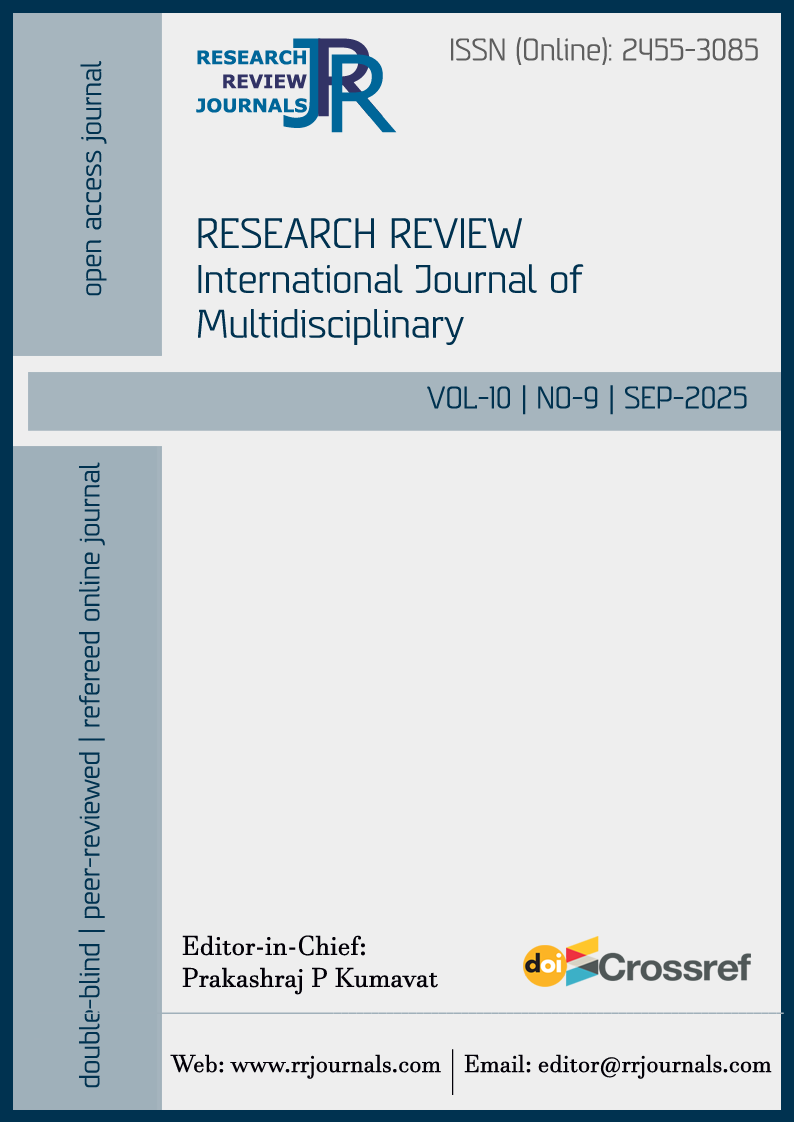The Lois of Manipur: A Socio-Historical Perspective from Sikhong and Nongpok Sekmai Villages
DOI:
https://doi.org/10.31305/rrijm.2025.v10.n9.019Keywords:
Lois, Meitei, Yek Salai, Sikhong, Nongpok Sekmai, Awang Sekmai, Sengmai, Loipot, Social Exclusion, Pottery, Salt Production, Wine Production, Scheduled Caste, ManipurAbstract
This paper critically examines the historical, socio-cultural, and economic positioning of the Lois of Manipur, focusing on the villages of Sikhong and Nongpok Sekmai. Traditionally marginalised within the hierarchical Meitei society, the Lois negotiated identity, agency, and occupational specialisation while maintaining distinct cultural practices. Sikhong historically produced salt but no longer practises salt-making, whereas Ningel continues local salt production. Nongpok Sekmai is renowned for pottery, and Awang Sekmai engages in traditional wine production as part of the Sengmai community. Drawing on archival records, colonial ethnographies, oral traditions, and contemporary scholarship, this study argues that Scheduled Caste recognition among the Lois should be confined to surnames that fall within the fold of the seven Yek Salai clans—those historically displaced to foothill regions by Meitei kings. Surnames outside this genealogical framework cannot be considered Lois and should not be granted Scheduled Caste status. The findings highlight the resilience of the Lois and their strategic adaptation to socio-political constraints.
Metrics
References
Bhattacharjee, J. B., & Bhattacharya, J. B. (2003). LoiYamba Shinyen: A landmark in Meitei state formation in medieval Manipur. Proceedings of the Indian History Congress, 64, 45–52.
Devi, L. B. (2002). The Lois of Manipur: Andro, Khurkhul, Phayeng and Sekmai. Google Books.
Devi, K. S., & Murry, B. (2014). Demographic profile of the Lois population of Manipur. ESOFT Metro Campus International.
Devi, N. K. (2020). A concise socio-political and cultural history of Manipur at the end of 17th century. Journal of Humanities and Social Science. Retrieved from https://www.academia.edu [Accessed on 12 July 2025].
Dube, S. C. (1990). Indian village. Routledge.
Hodson, T. C. (1908). The Meitheis. London: D. Nutt.
Madhubala, P. (2005). The relationship of Manipuri (Meitei) and Loi dialects. Indian Linguistics, 66(2), 89–102.
ManiBabu, M. (2012). Primary Ceramic Resources, Procurement Strategies and Cultural Factors: An Ethnoarchaeological Example from Manipur (India). Frontier Anthropology, 1(1), 79-98.
NK Devi. (2016). A concise socio-political and cultural history of Manipur at the end of the 17th century. Journal of Humanities and Social Science, 21(3), 12–27.
Parratt, S. N. A. (2005). The Court Chronicle of the Kings of Manipur-Cheitharon Kumpapa: Original Text, Translation and Notes Vol. 1. 33-1763 CE. Routledge.
Sen, S. (1992). Ethno-history of Manipur. Imphal: Manipur State Archives.
Sharma, R. (2020). Socio-economic history of the Lois of Manipur. Journal of Northeast Indian Studies, 12(1), 45–67.
Singh, A. (1967). The Yek Salai system of Manipur. Imphal: Manipur University Press.
Sana, K. (2010). Historical dynamics of Loi settlements in Manipur. Indian Anthropologist, 40(2), 101–120.
Downloads
Published
How to Cite
Issue
Section
License

This work is licensed under a Creative Commons Attribution-NonCommercial 4.0 International License.
This is an open access article under the CC BY-NC-ND license Creative Commons Attribution-Noncommercial 4.0 International (CC BY-NC 4.0).



